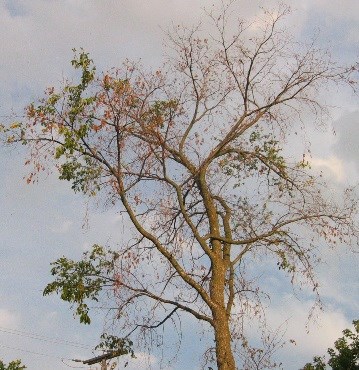Dutch elm disease is taking its toll on North Bay trees and is forcing the city to remove a number of dead trees along a popular waterfront trail.
The Waterfront Trail (Condo Trail) between Marathon Beach and Timmins Street will be closed from now until December 01 for the removal of dead trees that pose a safety risk to trail users.
In August, the parks crew thoroughly inspected all of the trees along a section of the Condo Trail, resulting in the identification of a number of dead trees. Most of the dead trees are elms which have been killed by Dutch Elm disease, an invasive, highly infectious fungal disease that is spread by beetles. The fungus causes wilting and browning of the leaves.
Infections usually are fatal and the tree dies within one to three years. Despite years of research, there is nothing that can stop this disease which is prevalent in the area.
"Only the dead trees will be removed at this time with a plan already in place to replace these trees with other native tree species," says Manager of Parks David Schroeder. "The remaining trees along this trail will continue to be carefully monitored and evaluated."
Dutch elm disease was first confirmed in Ontario in 1946.
The fungus is spread mainly by two species of beetles, the European elm bark beetle, and the native elm bark beetle. It can also spread through root grafts from infected trees to healthy trees.
According to a provincial website, the beetles dig galleries beneath the bark of infected trees where they reproduce. In spring, the bark beetles which have become covered by fungal spores, emerge and attach to healthy trees and begin feeding.
The fungus develops in the sap-conducting tissues under the bark and causes wilting and browning of the foliage.
If you have an infected tree you can prune and remove all dead branches and trees from the site.
An insecticide can be used in spring and fall to control bark beetles, and highly valued elm trees can be injected with a registered fungicide. However, they are costly, must be repeated regularly, and may only prolong the life of the treated tree by 5-10 years.



